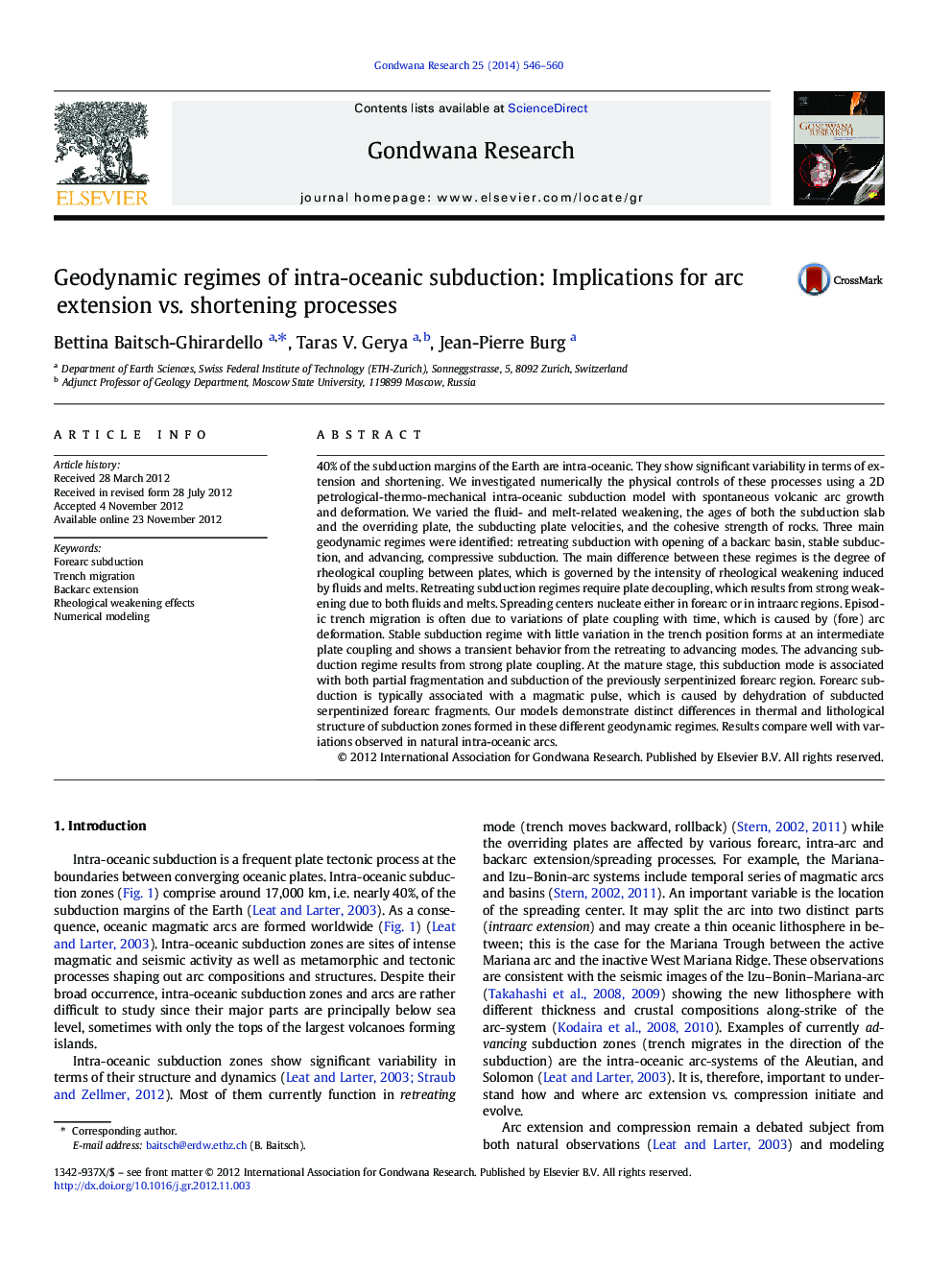| کد مقاله | کد نشریه | سال انتشار | مقاله انگلیسی | نسخه تمام متن |
|---|---|---|---|---|
| 4727088 | 1356360 | 2014 | 15 صفحه PDF | دانلود رایگان |
40% of the subduction margins of the Earth are intra-oceanic. They show significant variability in terms of extension and shortening. We investigated numerically the physical controls of these processes using a 2D petrological-thermo-mechanical intra-oceanic subduction model with spontaneous volcanic arc growth and deformation. We varied the fluid- and melt-related weakening, the ages of both the subduction slab and the overriding plate, the subducting plate velocities, and the cohesive strength of rocks. Three main geodynamic regimes were identified: retreating subduction with opening of a backarc basin, stable subduction, and advancing, compressive subduction. The main difference between these regimes is the degree of rheological coupling between plates, which is governed by the intensity of rheological weakening induced by fluids and melts. Retreating subduction regimes require plate decoupling, which results from strong weakening due to both fluids and melts. Spreading centers nucleate either in forearc or in intraarc regions. Episodic trench migration is often due to variations of plate coupling with time, which is caused by (fore) arc deformation. Stable subduction regime with little variation in the trench position forms at an intermediate plate coupling and shows a transient behavior from the retreating to advancing modes. The advancing subduction regime results from strong plate coupling. At the mature stage, this subduction mode is associated with both partial fragmentation and subduction of the previously serpentinized forearc region. Forearc subduction is typically associated with a magmatic pulse, which is caused by dehydration of subducted serpentinized forearc fragments. Our models demonstrate distinct differences in thermal and lithological structure of subduction zones formed in these different geodynamic regimes. Results compare well with variations observed in natural intra-oceanic arcs.
Figure optionsDownload as PowerPoint slideHighlights
► Numerical modeling of arc extension and shortening during intra-oceanic subduction
► Three main geodynamic regimes: retreating, stable, and compressive subduction
► Forearc subduction is triggered by serpentinization of the overriding plate.
Journal: Gondwana Research - Volume 25, Issue 2, March 2014, Pages 546–560
